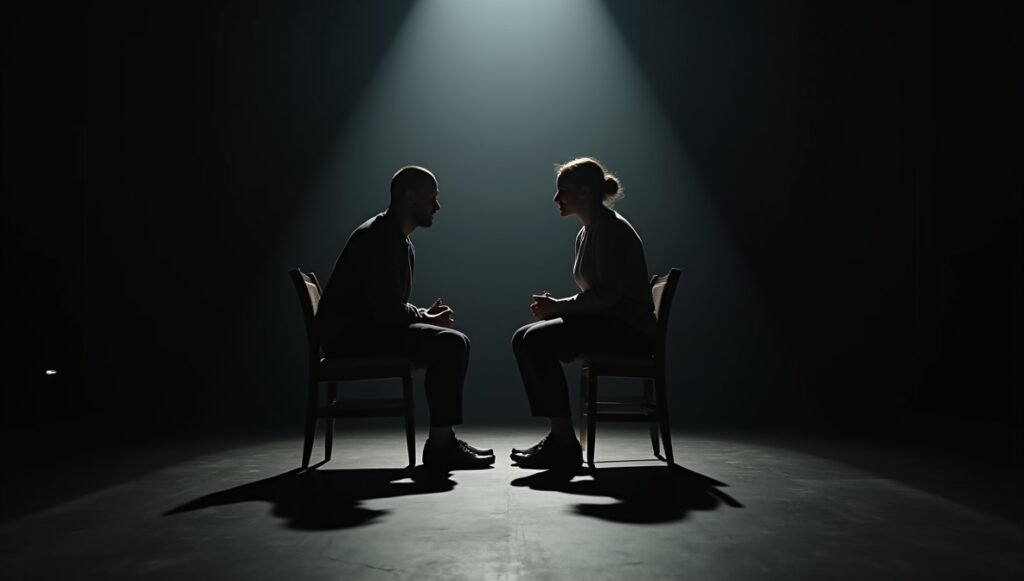Sanford Meisner famously defined acting as “living truthfully under imaginary circumstances.” His training system strips away posturing and pre-planning so the actor can respond to a partner with genuine, unforced impulse.
At the heart of that system is the Repetition Exercise—a deceptively simple drill in which two performers repeat an observation about each other back and forth until raw authenticity emerges.
Below you’ll find a thorough, section-by-section guide designed for teachers, students, and seasoned professionals who want to deepen their craft without drowning in jargon.
Each section contains two substantive paragraphs followed by practical bullet points you can apply in class tonight.
1. Origins and Philosophy of the Meisner Technique

Sanford Meisner (1905-1997) trained at the Group Theatre alongside Lee Strasberg and Stella Adler, yet he parted ways philosophically from both.
Where Strasberg emphasized inner memories and Adler championed imaginative circumstances, Meisner zoomed in on relationship and behavior. He believed truthful acting grows out of moment-to-moment connection, not self-reflection.
The Repetition Exercise emerged in the 1930s at the Neighborhood Playhouse in New York, where Meisner refined it over decades. Its purpose is to erase self-consciousness, sharpen listening, and teach actors to let behavior change organically.
By stripping language down to a single shared phrase, it clears away intellectual clutter and exposes real emotion.
- Relationship-first: Actors focus on partner, not themselves.
- Behavior over words: Tone, timing, and physical life matter more than literal text.
- Impulse training: Encourages visceral reaction before the mind censors feeling.
- Repeatable foundation: Every future Meisner exercise—activities, emotional prep—rests on skills learned here.
2. Core Principles Guiding Repetition

The exercise rests on three pillars: Listening, Responding, and Personal Meaning. Listening in Meisner parlance is active, whole-body attention—eyes, ears, intuition. Responding means giving in to the first honest impulse rather than editing for politeness or cleverness. Personal meaning develops when the actor allows what the partner does to affect them instead of pretending to be affected.
These principles counter “result acting,” where performers deliver preplanned emotions. Over time, repetition retrains the nervous system so authentic reactions occur even in scripted scenes. Actors become more present, stakes feel higher, and audiences sense the difference immediately.
- Deep focus drills: Eye contact sustains attention beyond social comfort.
- Impulse freedom: Silencing the “should” voice lets raw feeling surface.
- Moment-to-moment truth: Each repetition is a fresh event, not a copy.
- Transferable skill: The same muscles drive honest line readings later.
3. Setting Up: Room, Partners, and Ground Rules
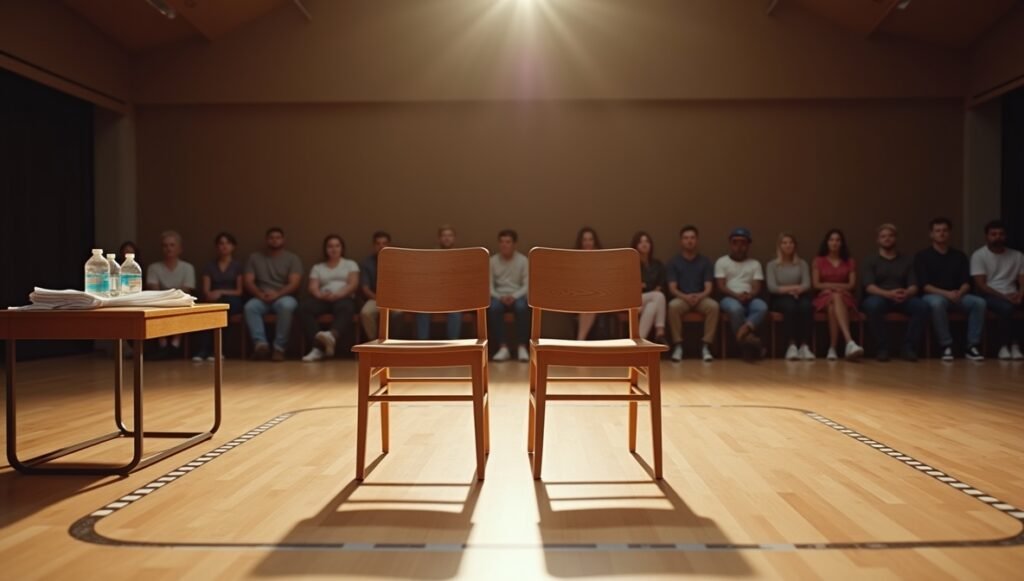
Environment matters. Choose a quiet studio with minimal visual noise—blank walls if possible. Two straight-back chairs centered in the space keep partners at equal height and modest distance (three to four feet). Spectators sit well behind the actors to reduce peripheral distraction.
Ground rules ensure safety: actors maintain soft but unwavering eye contact; no touching unless spontaneously motivated and instructor-approved; language must stay rooted in observation, free of insults that could harm trust. A clear agreement to “leave it in the room” protects vulnerability.
- Neutral space: Few props, even light levels, no mirrors.
- Equal footing: Chairs identical; neither actor towers over the other.
- Psychological safety: Instructor intervenes if boundaries break.
- Observer etiquette: No feedback until coach invites it, preserving actors’ focus.
4. Stage One: Simple Observation

Repetition begins with what is literally true. One actor makes a neutral statement about the partner—“You’re wearing a blue shirt.” The partner echoes verbatim, matching tone and rhythm. They pass the phrase back and forth until something shifts (tempo, energy, facial expression).
This stage trains accuracy before interpretation. By limiting content to objective facts, actors learn to see rather than invent. When boredom creeps in (and it will), they discover new details: breathing pace, micro-expressions, posture readjustments. The dialogue evolves organically into “You smiled,” “I smiled,” charting real-time changes.
- Start concrete: Color, posture, eye shape—anything indisputable.
- Echo precisely: Same words, same order, no embellishment.
- Watch for change: Shift phrases only when partner’s behavior genuinely alters.
- Coach cue: Instructor may tap chair if actors drift into commentary.
5. Stage Two: Behavioral Observation
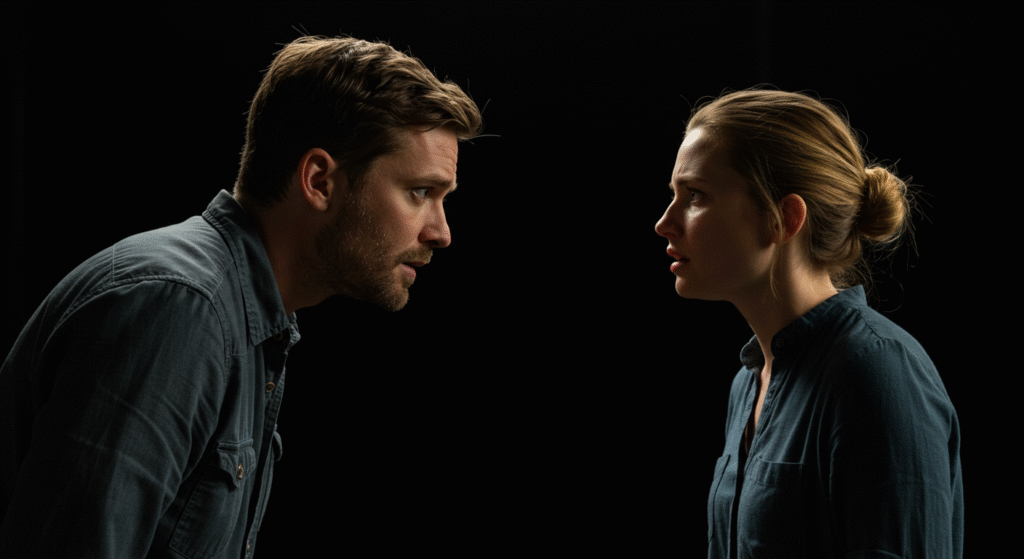
Once literal noticing feels natural, actors progress to describing behavior. Instead of clothing, they comment on emotional tone: “You seem tense.” Because behavior can’t be proven like a shirt color, it invites risk. The partner may agree, disagree, or deny—all valid, provided response is honest.
Emotions surface quickly here. If one actor says, “You look bored,” and the other feels accused, that spark fuels fresh repetitions: “I look bored? … You look annoyed!” The exercise becomes a ping-pong of truth and reaction, revealing inner life without intellectual analysis.
- Use “seem,” “look,” “sound” to stay rooted in observation.
- Allow disagreement: Truth lies in reaction, not consensus.
- Stay with it: Ride emotional waves rather than escape to new topics.
- Monitor tension: Coach intervenes if critique turns personal or shaming.
6. Stage Three: Personal Opinion and Emotional Truth
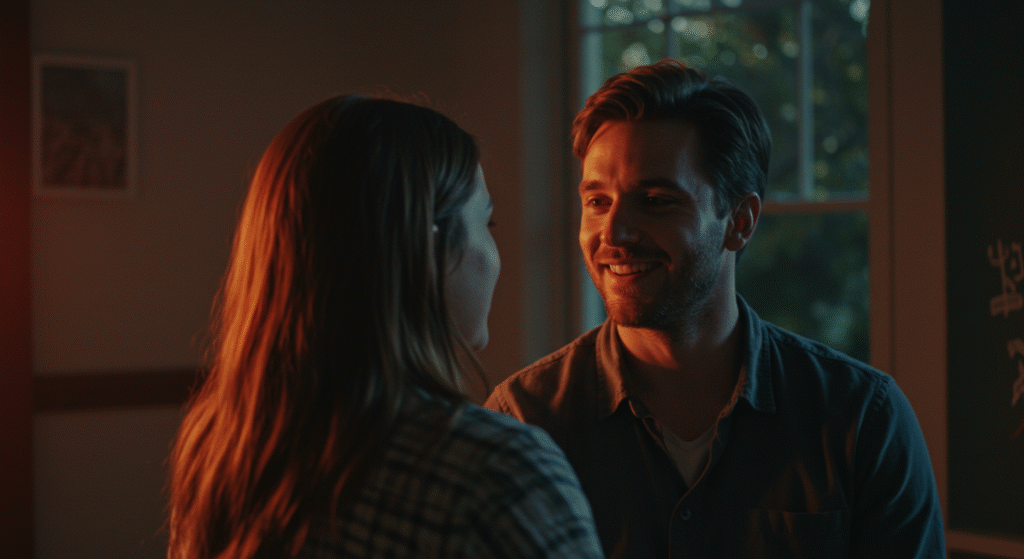
Actors now inject personal perspective: “I like how focused you are.” Opinions make them more vulnerable because they reveal judgment and desire. Partners respond impulsively—pleasure, discomfort, pride—without masking. The room often crackles with authenticity at this phase.
This stage builds emotional stakes, teaching actors to let feelings flood voice and body without commentary. No one tries to be interesting; interest arises naturally as invisible walls drop. Students report that after weeks of repetition, small truthful moments feel electrifying compared to forced drama.
- First-person phrasing: Use “I feel,” “I think,” “I want.”
- Honor impulse: If silence feels honest, repeat silence.
- Stay respectful: No cheap shots disguised as honesty.
- Teacher focus: Guide actors to stay present, not narrate experience.
7. Stage Four: Independent Activity Integration

Meisner adds a physical task—folding laundry, fixing a radio—to split attention. One actor performs the activity with real stakes (e.g., finishing before a timer). The second sits opposite and begins repetition. Divided focus pressures the actor to drop performance habits and trust impulses.
The activity must matter realistically: replacing a watch battery you need for work, not arbitrary busywork. When repetition collides with task urgency—“You’re rushing the screws!”—actors juggle doing and relating, mirroring real-life multitasking on stage.
- Choose meaningful tasks: Something that can fail or succeed.
- Time pressure: Egg timers, phone alarms raise stakes.
- No miming: Use real objects to anchor behavior.
- Instructor role: Stop exercise if activity hijacks relationship entirely.
8. Stage Five: Knock-at-the-Door Exercise
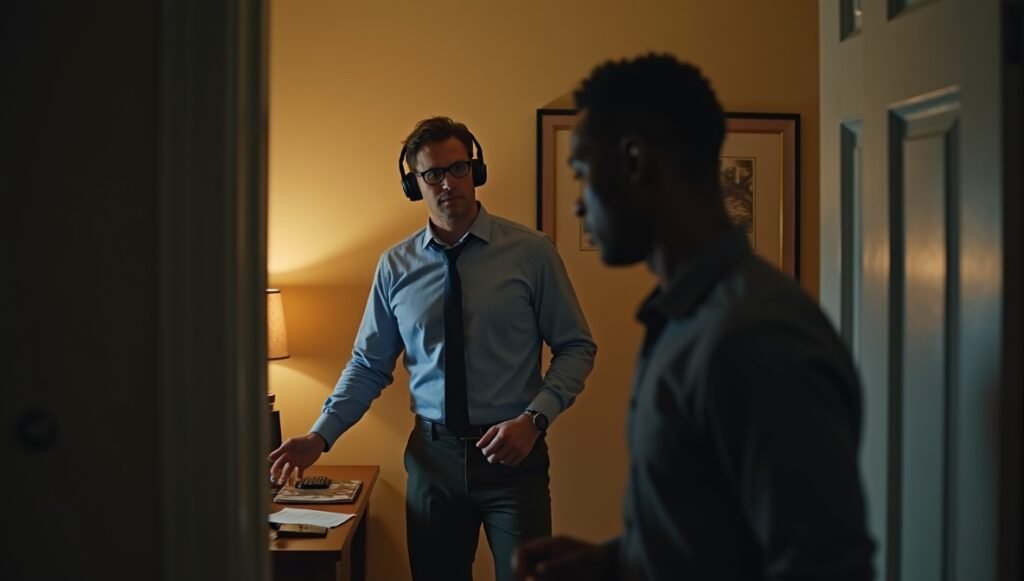
Next, Meisner introduces unexpected intrusion. While one actor tackles an independent activity, the partner arrives with a compelling reason to enter—returning a lost wallet, seeking urgent help. Repetition begins the moment door opens.
The knock demands specific preparation: Who am I? Why do I need this person now? Because needs clash, the exercise teaches conflict born from genuine objectives, not melodramatic invention. Actors navigate tension, adjusting behavior as new information lands through repetition.
- Strong reason: Life-and-death matters? Too extreme. Aim for believable urgency.
- Stake clarity: Write a one-sentence objective beforehand.
- Listen while doing: Door actor keeps activity alive unless crisis overrides it.
- Debrief: Class discusses how repetition exposed motives without exposition.
9. Common Mistakes and How to Fix Them

Many beginners comment on the exercise rather than participate—“We’re just repeating!”—which diffuses authenticity. Others chase originality, forcing clever phrases before truly noticing. A third error is intellectual debate: analyzing partner’s statement instead of responding emotionally.
Corrections involve re-centering on partner and trusting monotony. The power of repetition lies in simplicity; interesting behavior emerges when actors stop trying to be interesting. Coaches often restart the drill with the instruction, “Say what you see, not what you think would look good.”
- Avoid commentary: Stay inside exercise language.
- Drop agenda: Originality is a by-product, not a goal.
- Feel first, speak second: Let body reactions guide words.
- Video playback: Watching pitfalls accelerates self-correction.
10. Linking Repetition to Scripted Text
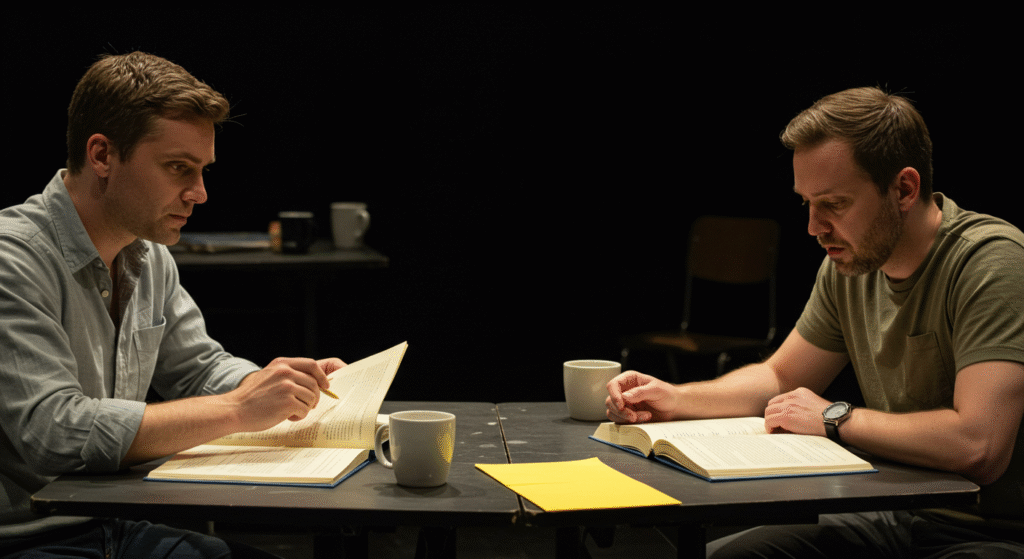
After months of drills, actors transfer skills to scenes. First, they run dialogue as written while holding the repetition mindset—listening for nuances, allowing lines to land fresh. Directors notice speech rhythms become less symmetrical, more life-like.
Second, pairs may alternate lines of script with lines of spontaneous repetition. When a scripted sentence feels empty, they slip into repeating the emotional truth underneath, then return to text once connection reignites. This bridges improvisational honesty with playwright structure.
- Cold scene pass: No blocking, just seats and honest listening.
- Inner repetition: Silently echo partner’s behavior between lines.
- Text/repeat hybrid: Useful in early rehearsals to locate dead moments.
- Journal reflection: Actors note where repetition deepened stakes.
11. Advanced Variations and Emotional Preparation
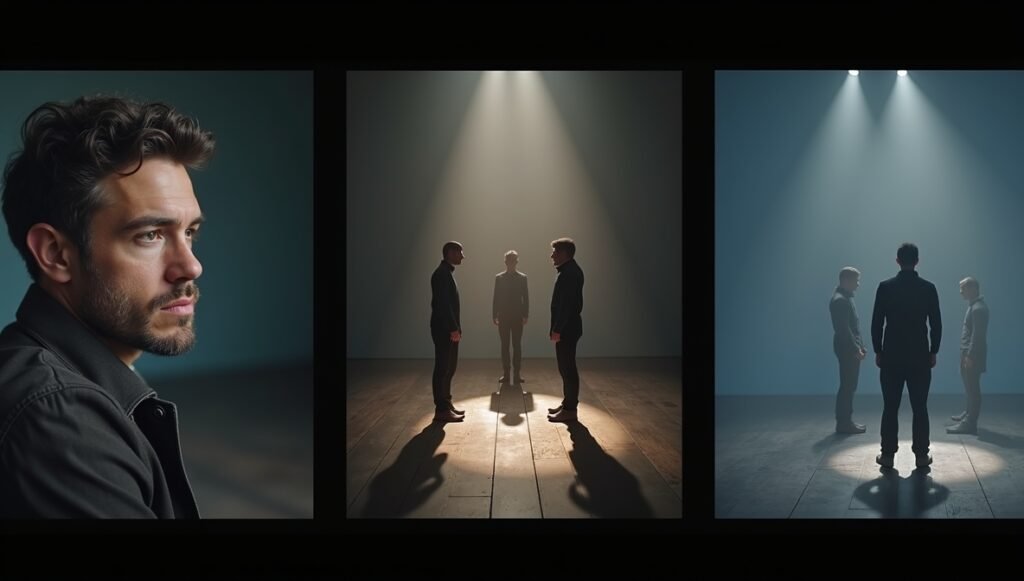
Seasoned students incorporate Emotional Preparation—arriving with a pre-imagined emotional circumstance (joy, grief) then letting repetition trigger release. The emotion must remain malleable; if partner’s behavior doesn’t justify crying, tears should not be forced.
Other variations include Three-Person Repetition to teach shifting focal points, or Spatial Repetition where partners move freely, letting proximity impact tone. These keep technique flexible, preventing rote patterns that can calcify over time.
- Private moment before entry: Picture event that stirs desired emotion.
- Let it go: Drop preparatory image once partner interaction begins.
- Rotate partners: Fresh chemistry reveals blind spots.
- Mix standing, sitting, moving: Physicality influences impulse.
12. Benefits Beyond the Acting Studio

Meisner repetition sharpens real-world communication: active listening, quick empathy, and reading subtext. Corporate trainers borrow the drill to improve team dynamics; therapists adapt it for couples to practice “reflection without judgment.”
For actors, benefits include reduced performance anxiety—attention shifts outward, calming self-critical chatter. Auditions feel more like conversations, less like recitals. Directors appreciate Meisner-trained talent for their adaptability and responsiveness.
- Heightened awareness: Spot subtle emotional shifts in everyday talk.
- Faster rapport: Listening skills translate to networking and collaboration.
- Stress reduction: External focus lowers cortisol spikes under pressure.
- Casting edge: Industry notes Meisner actors often book ensemble-heavy roles.
13. Integrating Meisner with Other Techniques
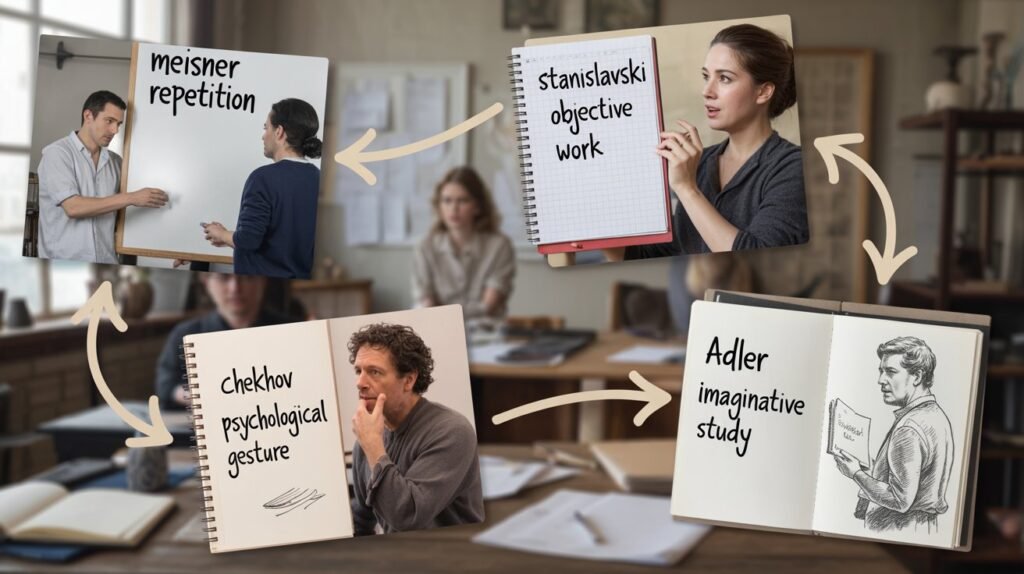
Contrary to tribal studio myths, Meisner mesh well with Stanislavski objectives, Adler imaginative work, or Chekhov physical gesture. Repetition supplies listening muscles; other systems add text analysis, physical scoring, or character history.
When blending methods, keep one focus per rehearsal run. For example, start with Meisner repetition to ignite connection, then switch hats to Uta Hagen substitution for a challenging monologue. Confusing vocabularies mid-scene risks diluted results.
- Complement, don’t compete: Identify what each method solves.
- One lens at a time: Prevent cognitive overload.
- Shared language: Agree on terms during ensemble rehearsals.
- Coach mediation: Experienced teacher helps integrate exercises smoothly.
14. Designing a Six-Week Self-Practice Plan

Week 1-2: Daily 20-minute simple observation repetition with rotating partners.
Week 3: Add behavioral observation; record sessions; note impulse lag times.
Week 4: Integrate independent activity; use kitchen tasks at home practice.
Week 5: Introduce knock-at-door with clear stakes; reflect on conflict truth.
Week 6: Move into a short scripted scene while keeping Meisner awareness alive.
Consistency beats marathon sessions. Better five minutes of pure focus than an hour of half-hearted drills. Pair up outside class or use online video calls—eye contact via webcam still trains concentration muscles.
- Micro-sessions: Set phone timer; stop when focus wanes.
- Objective tracking: Write one improvement goal per week.
- Accountability buddy: Partners text daily practice confirmations.
- Rest days: Processing time is integral to neural rewiring.
15. Troubleshooting: Plateaus and Burnout
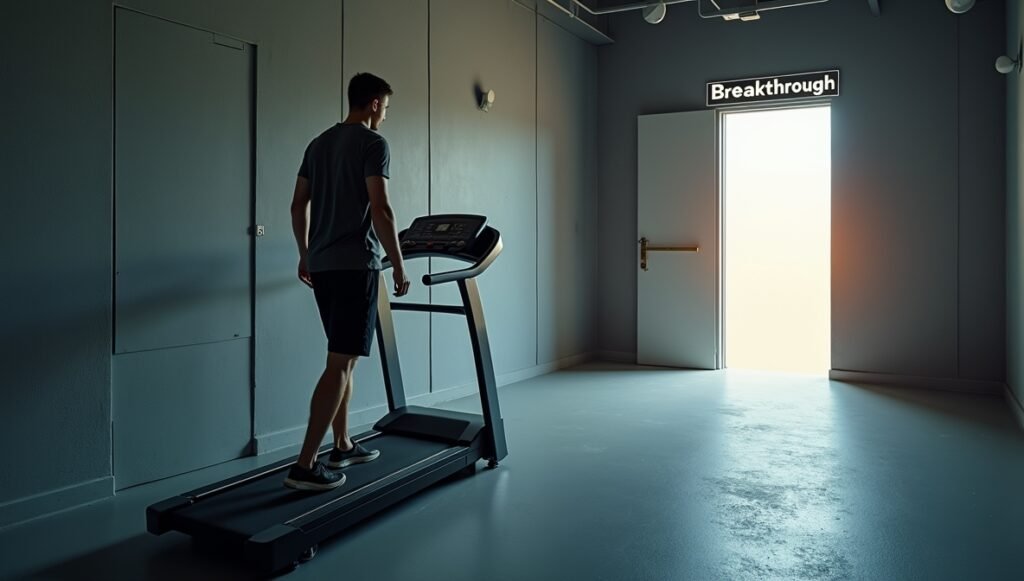
Like weightlifting, repetition can hit plateaus. Symptoms include mechanical delivery, sarcastic tone, or dreading the exercise. Solutions involve fresh partners, new environments, or momentary retreat to simple observation to rebuild basics.
Burnout often signals emotional overexertion without recovery. Schedule debrief circles where actors share sensations, then perform grounding techniques—box breathing, stretching. Healthy practice sustains vulnerability without draining reserves.
- Change variables: Lighting, distance, seating arrangement.
- Mindful cooldown: Guided meditation resets nervous system.
- Instructor rotation: Hearing feedback from guest coach revives curiosity.
- Celebrate wins: Acknowledging subtle growth fuels motivation.
16. Ethical Considerations and Respectful Practice

Repetition requires trust; careless remarks can wound. Institutions must set clear consent protocols: actors may pause the drill if triggered. Coaches monitor power dynamics, ensuring no one uses “truth” to belittle or dominate.
Diversity awareness matters. Comments about race, body type, or gender expression can cross lines quickly. Train students to focus on behavior and emotion rather than immutable traits unless previously agreed upon as safe territory.
- Consent check-ins: Quick thumbs-up before sensitive stages.
- Inclusive language: Avoid descriptors tied to identity categories.
- Instructor modeling: Coaches demonstrate respectful observation.
- Incident protocol: Have clear steps for addressing boundary breaches.
17. Long-Term Growth: From Classroom to Career
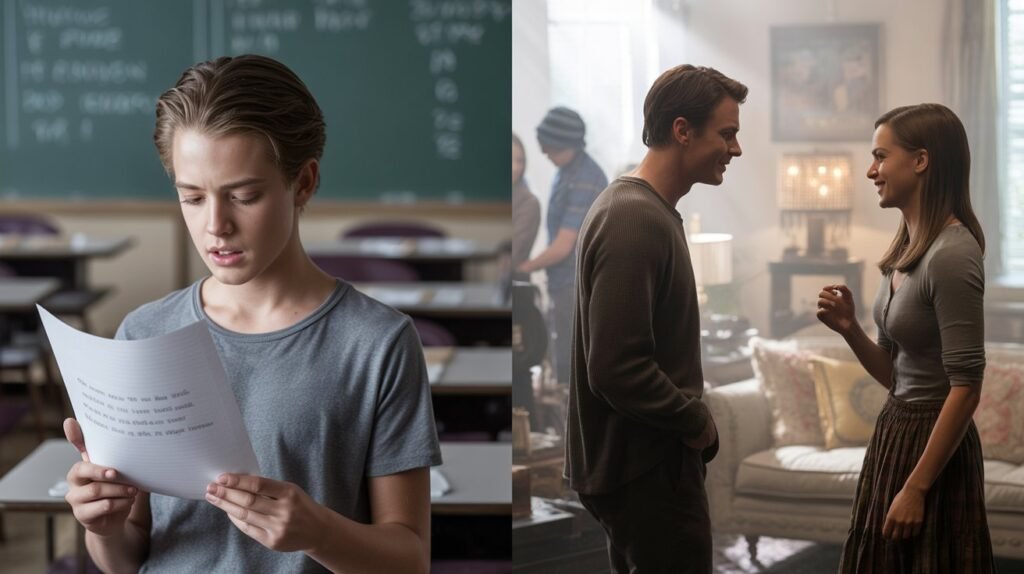
Mastery of Meisner repetition takes years, not months. Alumni often revisit basics between gigs to recalibrate presence. The drill adapts to film close-ups—where micro-reactions read as dialogue—and to stage where heightened stakes travel to the back row.
Casting directors increasingly value chemistry reads; repetition skills shine here, showcasing how fluidly you connect with potential co-stars. Ultimately, the exercise builds an artistic compass: if behavior feels forced, you sense it instantly and adjust.
- Ongoing practice: Monthly tune-ups keep reflexes sharp.
- On-set warm-ups: Quick repetition aligns ensemble energy before takes.
- Solo adaptation: Mirror work repeating self-observations hones awareness.
- Career longevity: Authenticity never goes out of style.
Conclusion

The Meisner Repetition Exercise is less about parroting words and more about awakening an actor’s capacity for spontaneous truth.
Step by step—from simple observation to emotionally charged knock-at-the-door scenes—it drills the muscles of attention, empathy, and impulse.
Master these phases, and your scripted performances gain organic life that directors, casting teams, and audiences instantly recognize as real.
Make repetition a daily ritual and watch not only your acting, but your human interactions deepen with vibrant authenticity.

